Adding events
We've learned about ACTIONS, which define the what the user can or cannot do at any given time. But how do you control what happens after those user actions? That's where events come in.
Example given:
Once the learner succesfully swipes their hospital badge to the closed ward, a sound should play and the door should open. We'll define one action [Use badge on badgereader] and two events [event: play sound BEEP & event: play animation on DOOR]
Where to add events
There are 2 timeslots where you can trigger events.
- Before each step starts - Find the section BEGIN in each step
- After the step, in each outcome - expand the outcome card and find the EVENT section
Event types
Event Set an object's visibility
Show or hide an object. In the example we just tested which glove you should wear in the hospital room and are hiding the two faulty gloves to avoid confusion in the next steps.
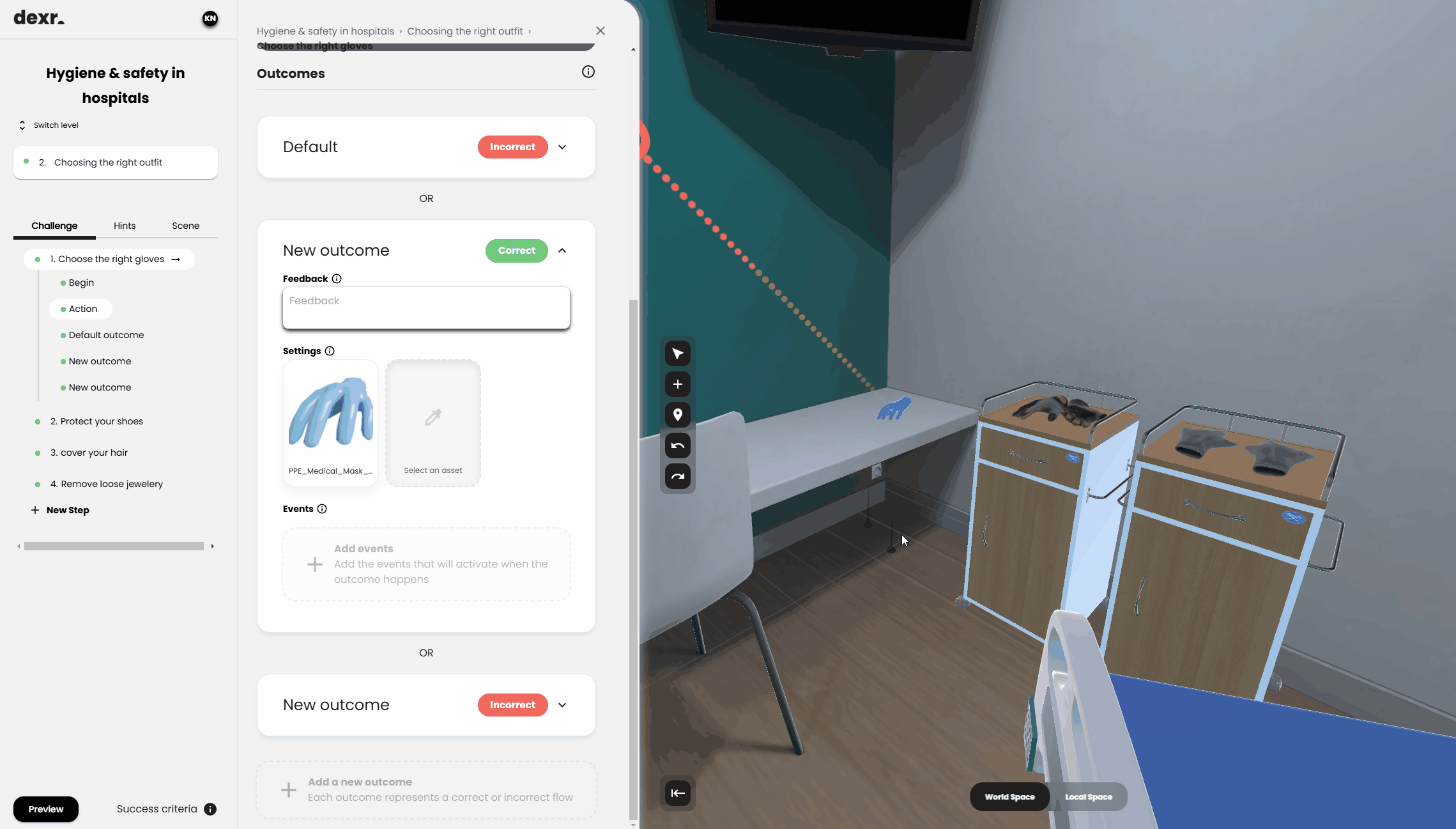
As you can see, once the we succesfully complete step 1 by choosing the medical gloves, the other two gloves dissapear.

Event Set an object state
Change the state of the scene by setting assets to specific substates. In this example, the lid will open when this step starts.
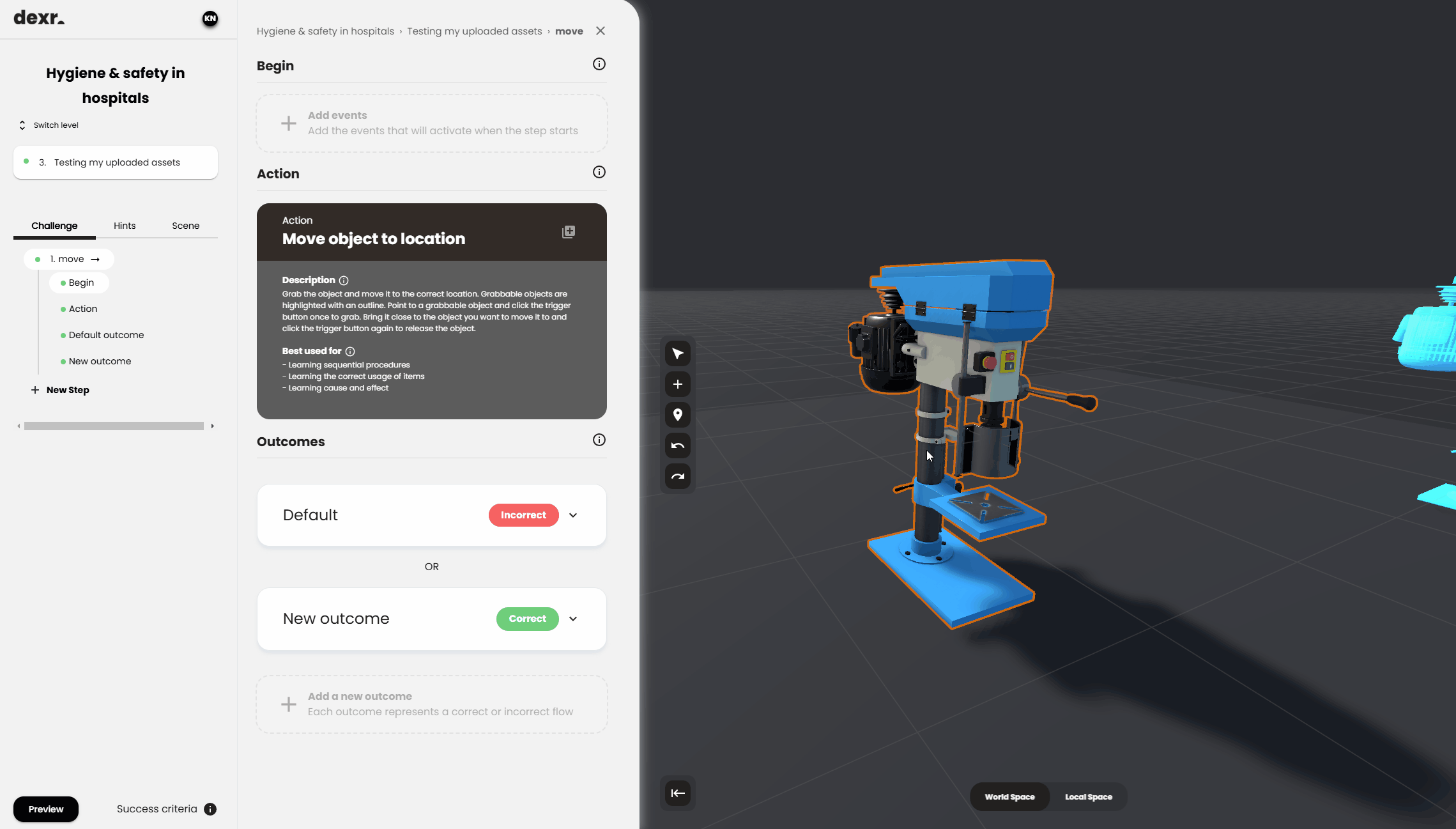
As you can see, once the first step starts, it automatically opens the top lid of the drill.
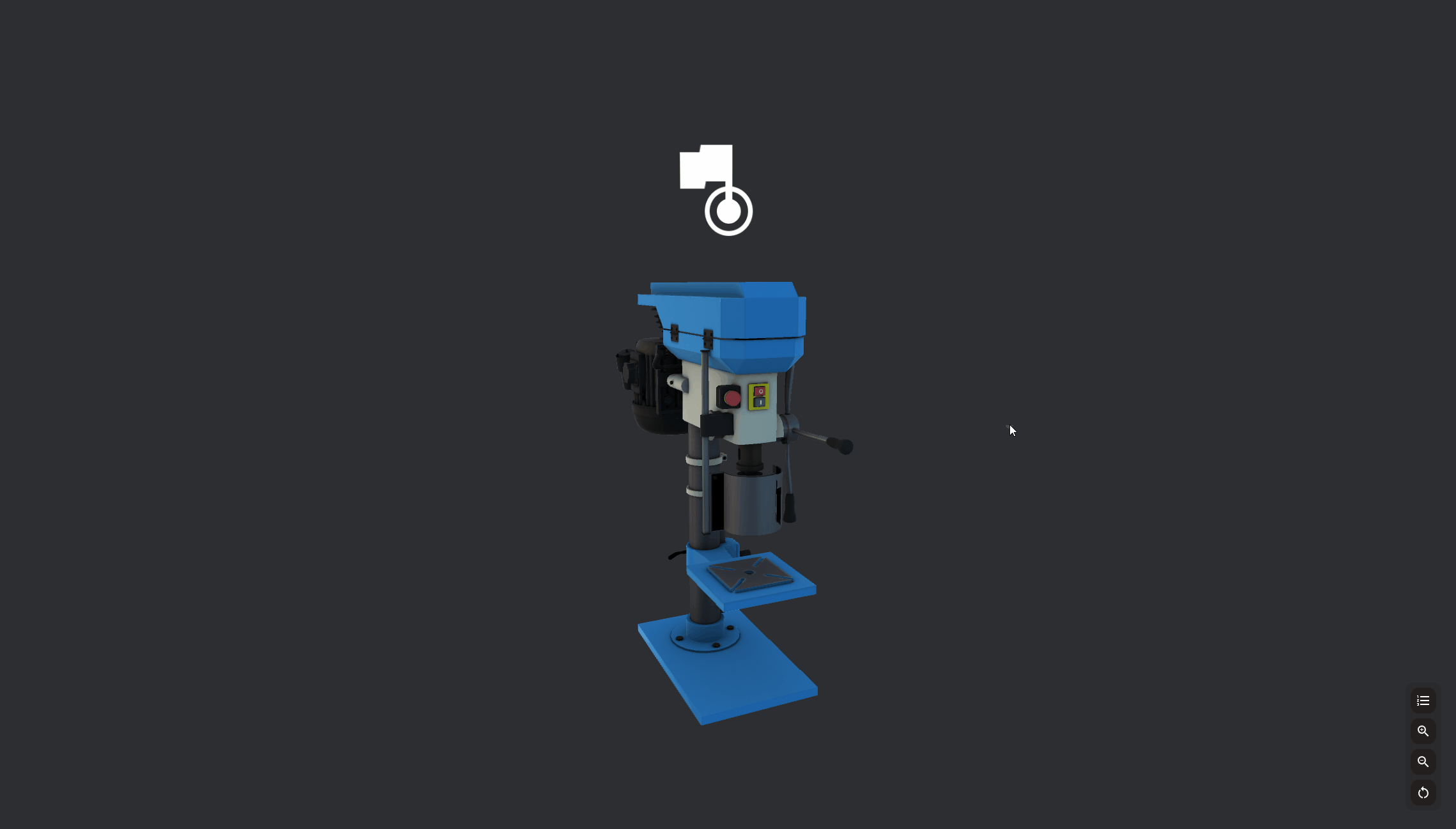
Event Show an Info Panel
Guide the user by showing text and/or image info panels.
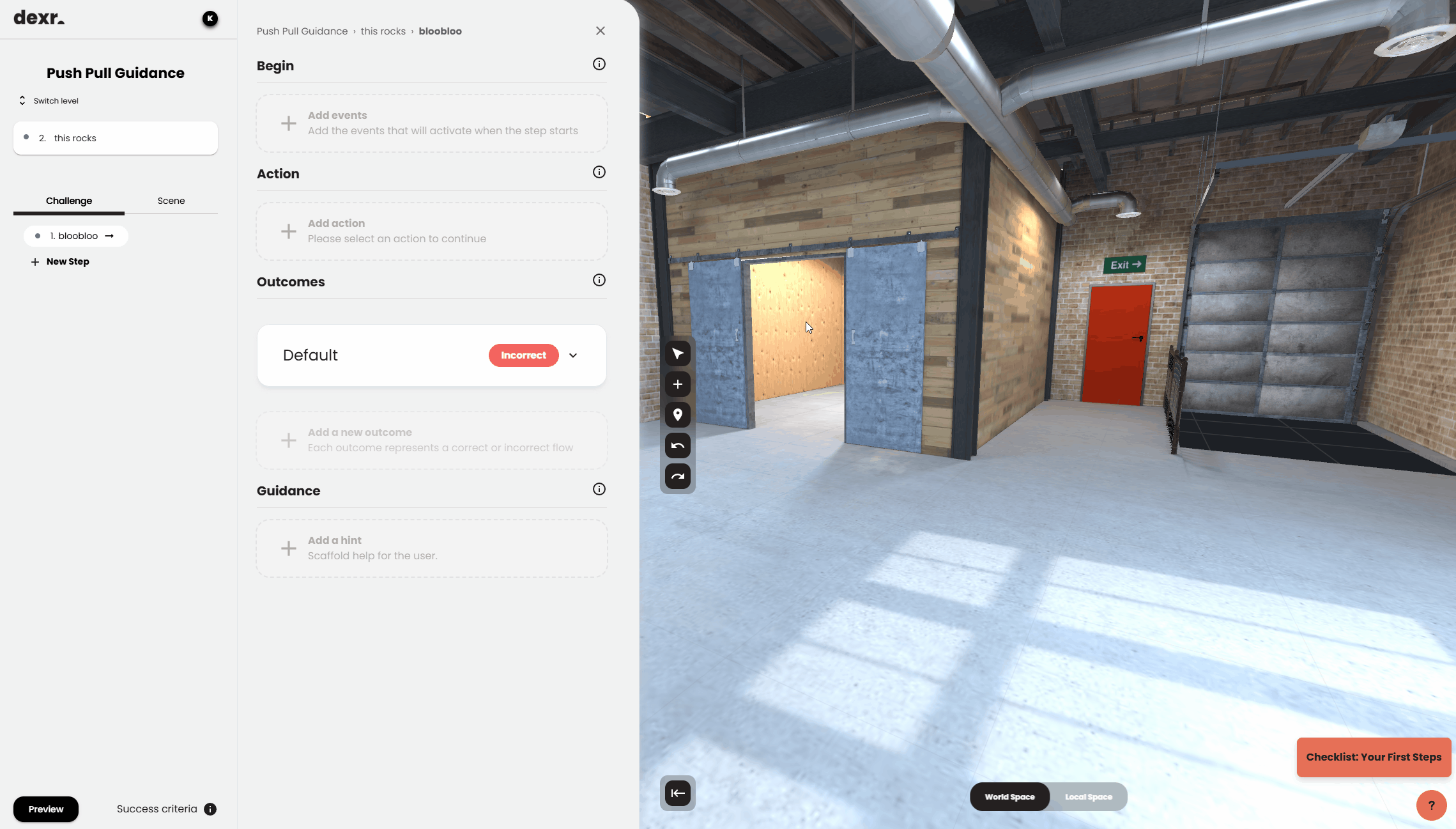
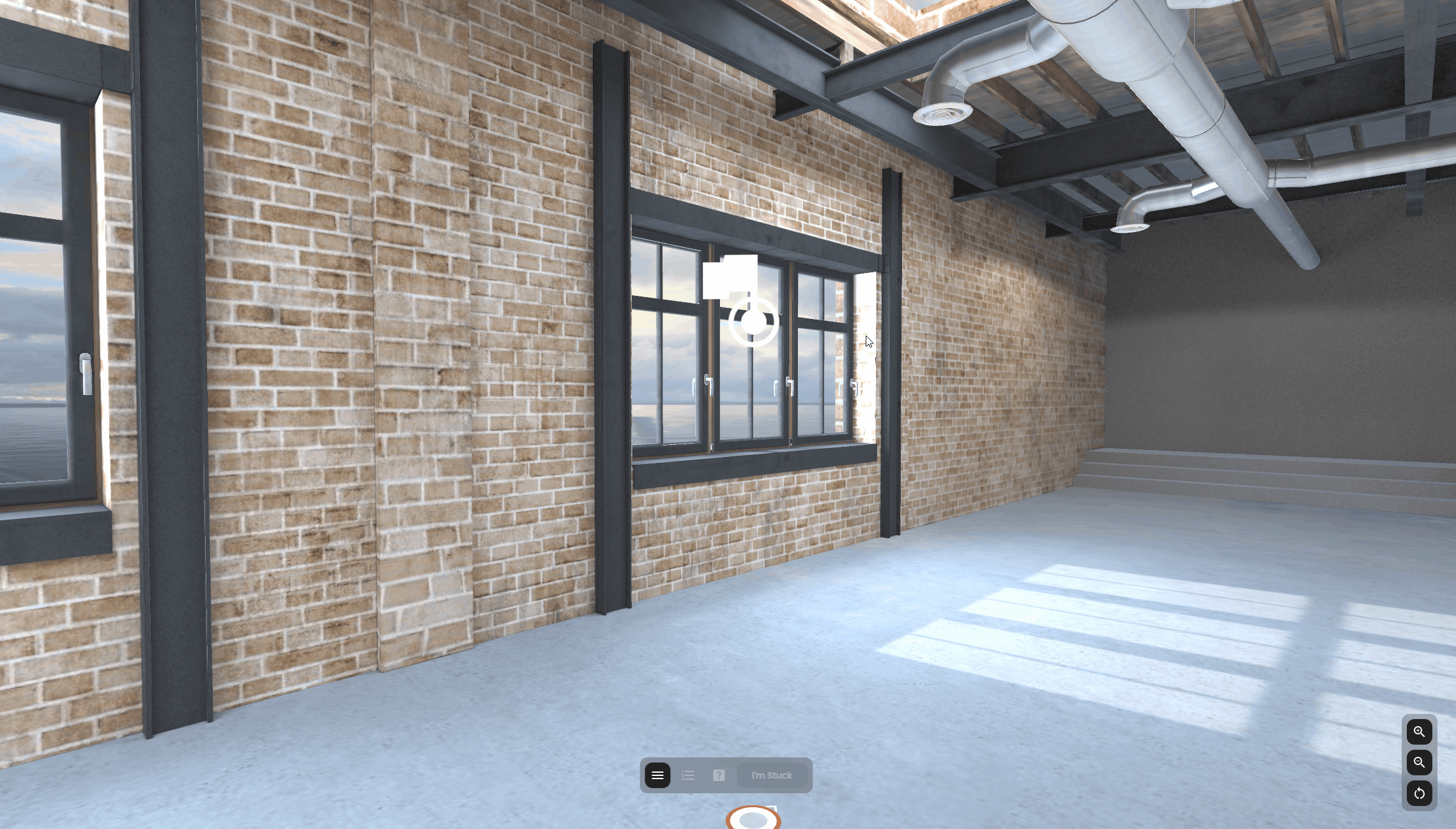
Event Tell a learner something (via TTS)
Guide the user by telling something via Text-To-Speech.
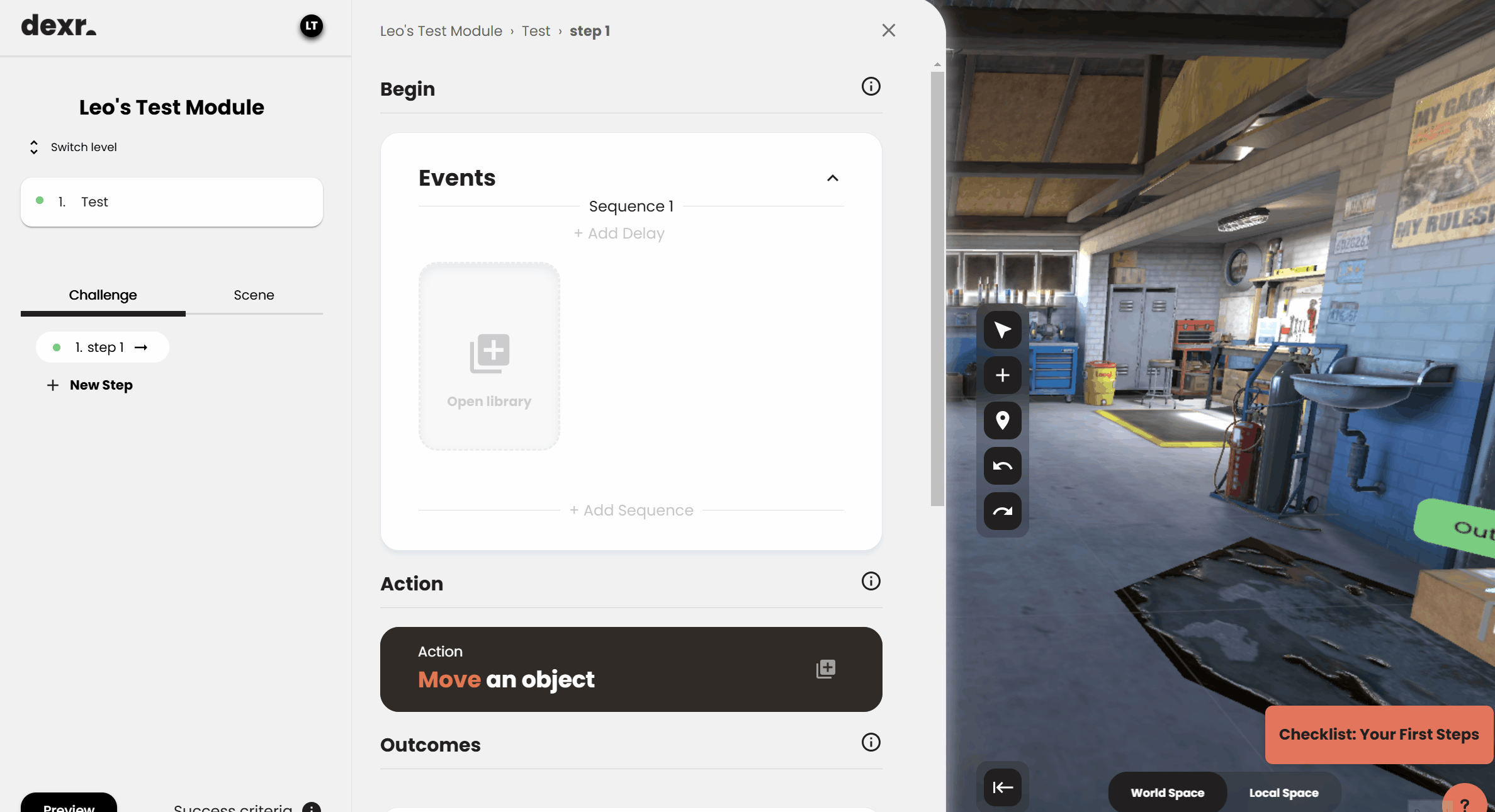
Event Let a Character Speak
Create immersive scenario's by letting characters speak. 1 audio clip at a time.
preview N/A
Complex event setups using sequences
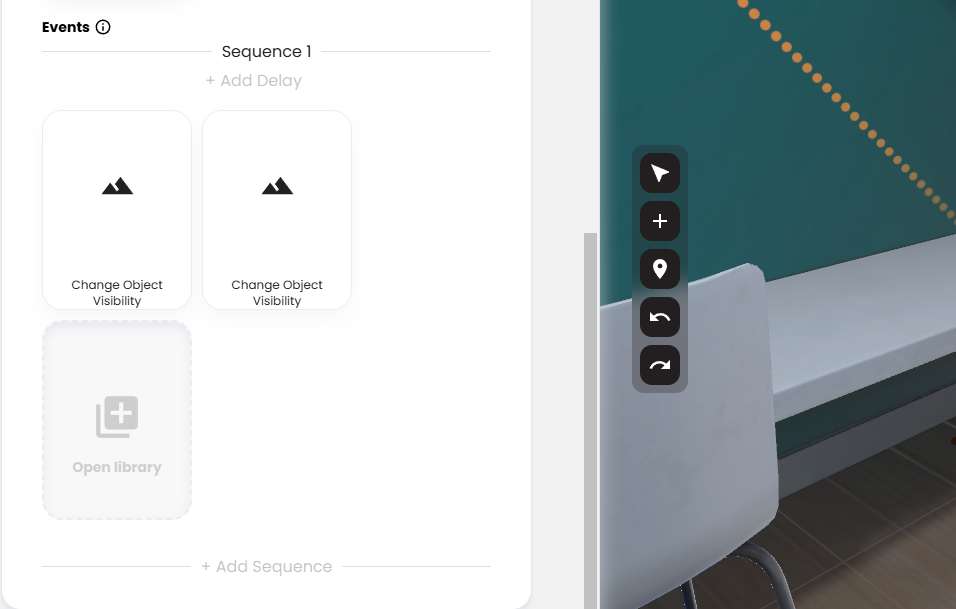
You'll notice when you add events they are grouped by default in "sequence 1" with an option to "add a sequence" at the bottom. This is an approximation of a timeline which works as follows:
- All events in a sequence are triggered at the same time. - example: playing a sound and opening the door at the same time
- Sequences are played one after the other - example: after the door is opened, start a speech audio incentivizing the user to walk through the door
Furthermore, you can see there is an "add delay" option. This is a literal timer that will wait between sequences. When delays are added you could achieve the following:
- The user completes the action of swiping a badge to a badgereader
- Play a beep sound
- Wait 2 seconds
- The door opens
- Wait 2 seconds
- An Speaker audio plays telling the user to go to the next room.
